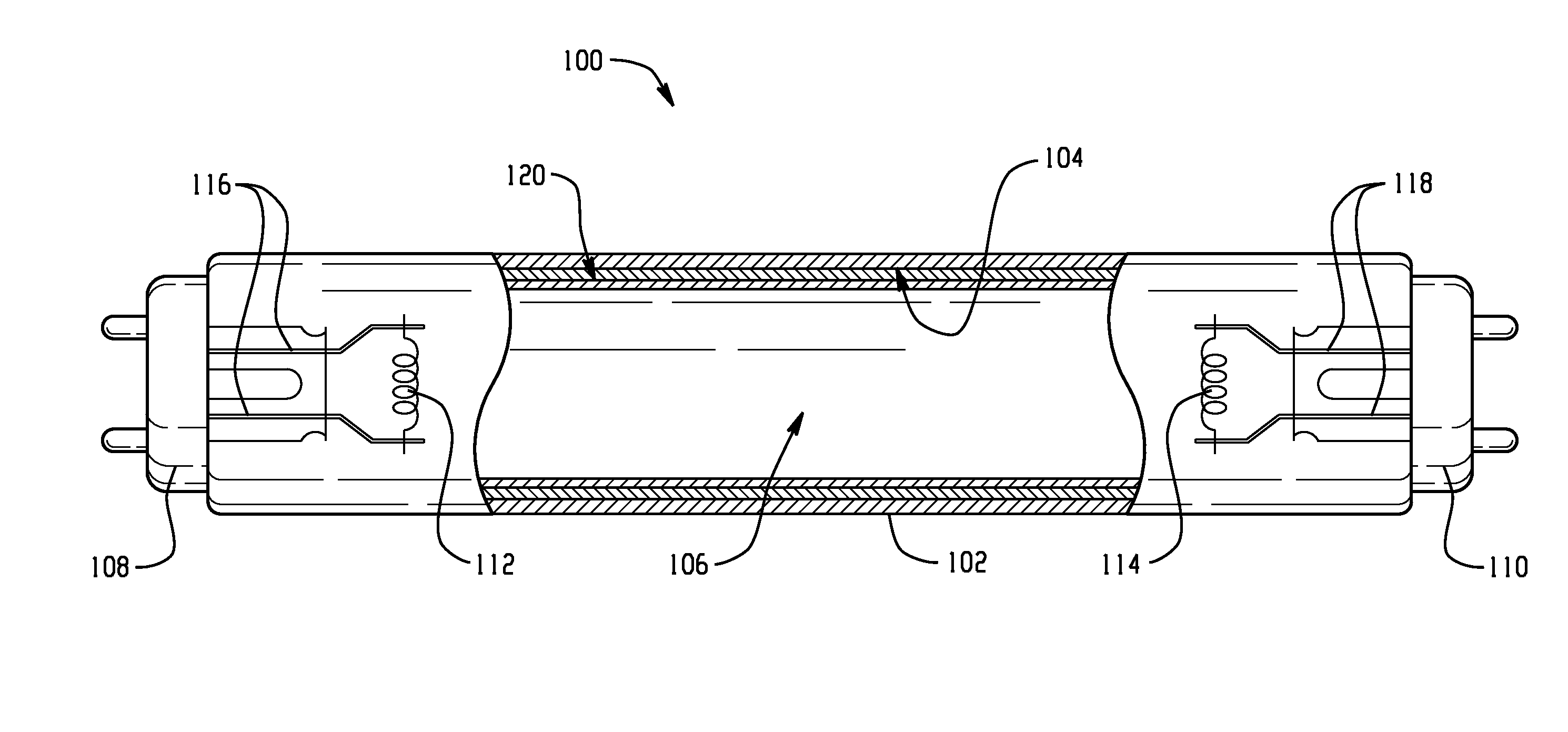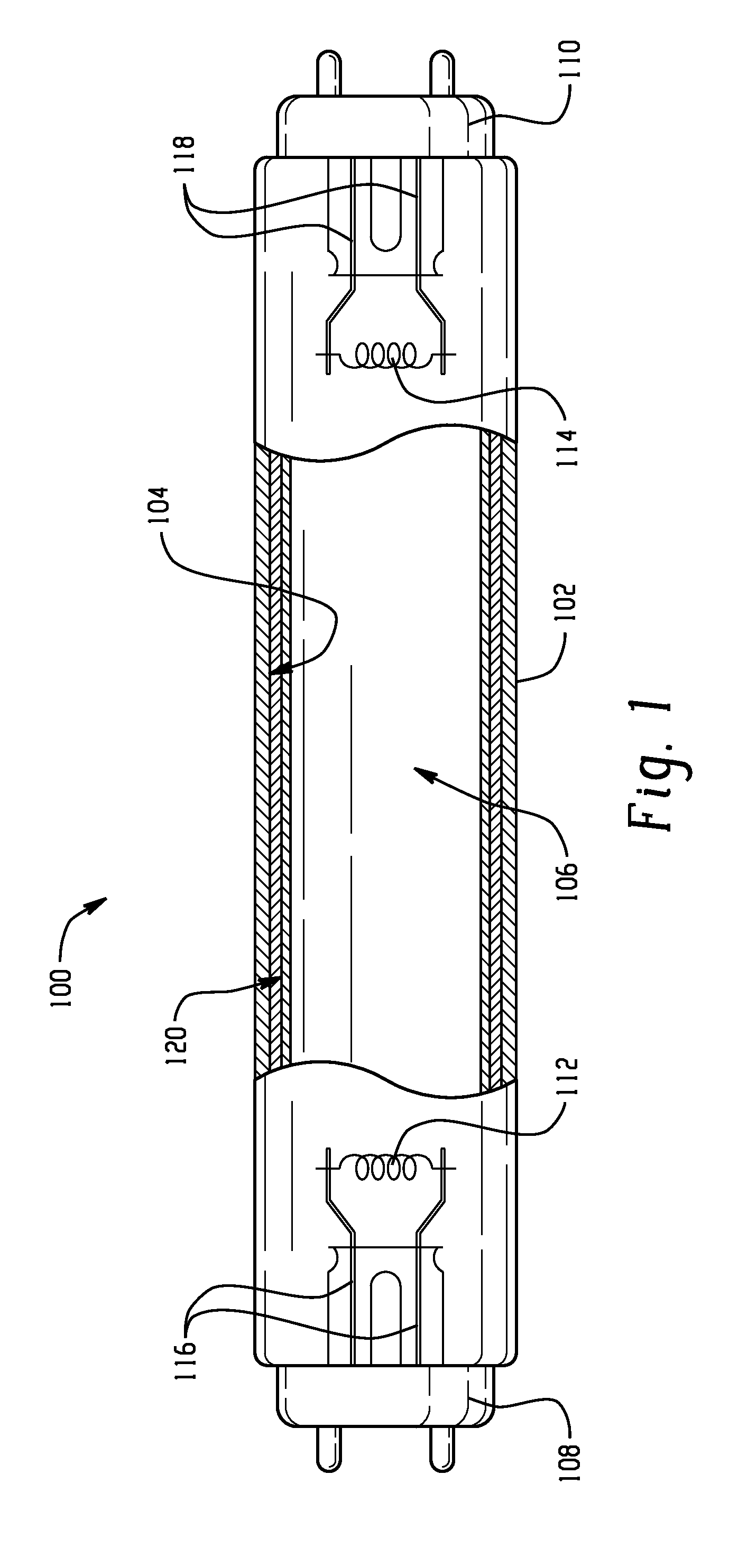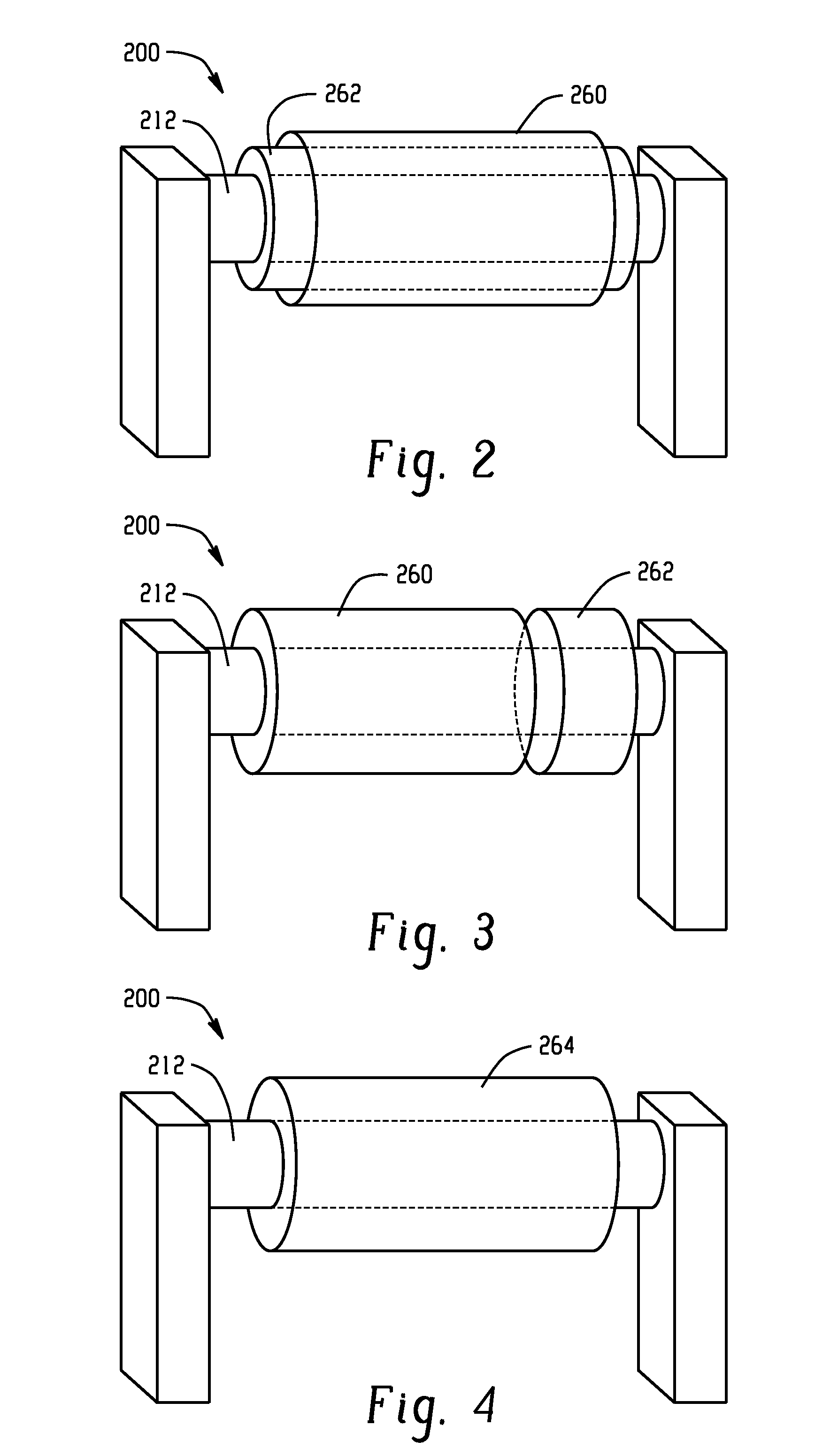Mercury dosing method for fluorescent lamps
a fluorescent lamp and mercury vapor technology, applied in the manufacture of electric discharge tubes/lamps, discharge tubes luminescnet screens, electrode systems, etc., can solve the problems of increasing lamp cost, increasing lamp cost, and requiring special dosing equipment, so as to reduce lamp cost
- Summary
- Abstract
- Description
- Claims
- Application Information
AI Technical Summary
Benefits of technology
Problems solved by technology
Method used
Image
Examples
example 1
[0034]While a coiled electrode 200 in keeping with FIG. 2 is used in the following examples, it is to be understood that the coiled configuration has no critical bearing on the placement or function of the mercury and / or emission coatings. FIG. 2 is used to show the mercury containing composition disposed over the electron emission composition layer. In this example, a carbonate electron emissive composition is initially prepared. The coiled electrode is coated with a carbonate compound of barium, strontium, or calcium and up to about 5% of a zirconium oxide (ZrO2) additive to form the carbonate electron emissive composition layer. The constituents of the electron emissive material are suspended in butyl-acetate. A small amount is nitrocellulose (typically 1 m / m% of the electron emissive material) is also added to the suspension to ensure proper adhesion of the electron emissive material to the coil. The coated, coiled electrode is heated to about 1200° C. in order to decompose the ...
example 2
[0035]While a coiled electrode 200 in keeping with FIG. 3 is used in the following example, it is to be understood that the coiled configuration has no critical bearing on the placement or function of the mercury and / or emission coatings. In FIG. 3 the mercury containing composition coating is disposed adjacent the electron emission composition coating and directly on the electrode coil. In this example, the coiled electrode is coated with a carbonate electron emission composition as described in Example 1. The coated coiled electrode is heated to about 1200° C. in order to decompose the mixture into its active oxide phase and carbon dioxide as described in Example 1. The coated coiled electrode is then coated directly with a mercury-containing composition, such as mercury tungsten oxide (HgWO4), disposed adjacent the carbonate emission composition. The coated electrode is sealed into the chamber. During the sealing process the temperature of the coated electrode remained below 500°...
example 3
[0036]While a coiled electrode 200 in keeping with FIG. 4 is used in the following example, it is to be understood that the coiled configuration has not critical bearing on the placement or function of the mercury and / or emission coatings. In FIG. 4, the coiled electrode is coated with a composition formed by mixing an air stable electron emissive composition and a mercury containing composition, thus requiring the deposition of only one mercury dosing layer. Fine powders of mercury tungsten oxide and barium calcium tungsten oxide, an air-stable electron emissive composition, were mixed in a mass ratio of 14:86, respectively. The resulting mixture was suspended in butyl acetate. The coiled electrode was then coated with the formed composition. The coated electrode is sealed into the chamber. During the sealing process the temperature of the coated electrode remained below 500° C. Current is passed through the the coated electrode to heat up to about 300° C. not higher than 500° C. t...
PUM
 Login to View More
Login to View More Abstract
Description
Claims
Application Information
 Login to View More
Login to View More - R&D
- Intellectual Property
- Life Sciences
- Materials
- Tech Scout
- Unparalleled Data Quality
- Higher Quality Content
- 60% Fewer Hallucinations
Browse by: Latest US Patents, China's latest patents, Technical Efficacy Thesaurus, Application Domain, Technology Topic, Popular Technical Reports.
© 2025 PatSnap. All rights reserved.Legal|Privacy policy|Modern Slavery Act Transparency Statement|Sitemap|About US| Contact US: help@patsnap.com



